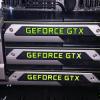NVidia CEO and President on GTX 970
-
Featured Topics
-
Topics
-
0
-
Aftermedi ·
Posted in General Discussion0 -
Artur Hawkwing ·
Posted in Storage Devices0 -
Blazepoint5 ·
Posted in Laptops and Pre-Built Systems1 -
INotPablo ·
Posted in Graphics Cards0 -
3
-
Teary_Oberon ·
Posted in CPUs, Motherboards, and Memory4 -
2
-
Dragonwinged ·
Posted in Networking1 -
joe_ollie909 ·
Posted in Graphics Cards2
-






.thumb.jpeg.9babd505c85c11addf31a285a02547cc.jpeg)








Create an account or sign in to comment
You need to be a member in order to leave a comment
Create an account
Sign up for a new account in our community. It's easy!
Register a new accountSign in
Already have an account? Sign in here.
Sign In Now